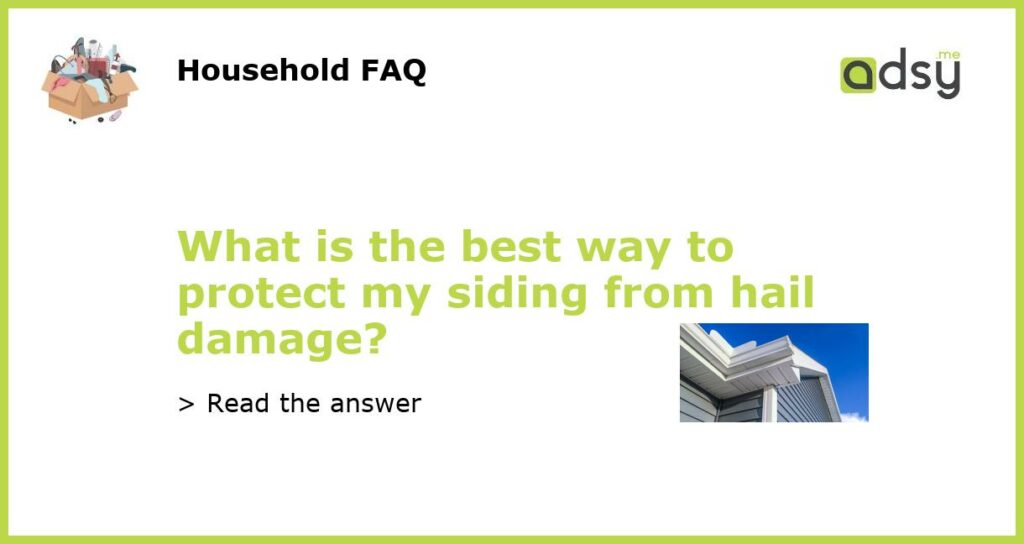What is the best way to protect my siding from hail damage?
When it comes to protecting your home from hail damage, your siding is one of the most vulnerable areas. Hail can cause significant dents, cracks, and other forms of damage to your siding, which can lead to more expensive repairs down the line. Fortunately, there are several steps you can take to protect your siding from hail damage and ensure that your home remains in good condition. Whether you are installing new siding or looking for ways to mitigate existing damage, these tips can help protect your siding and preserve the value of your home.
Choose impact-resistant siding materials
One of the best ways to protect your siding from hail damage is to choose impact-resistant materials. Some siding materials, such as vinyl and aluminum, are more prone to dents and cracks when exposed to hail. On the other hand, fiber cement and engineered wood siding tend to be more resistant to hail damage due to their higher density and stronger composition. Additionally, installing impact-resistant siding can also help lower your home insurance premiums, as some insurance companies offer discounts for homes with impact-resistant materials.
Install a protective layer
To provide an extra layer of protection for your siding, consider installing a protective layer, such as house wrap or foam insulation. House wrap acts as a barrier to keep moisture out and can also help absorb the impact of hail to prevent it from directly hitting your siding. Foam insulation, on the other hand, not only provides insulation benefits but also adds a layer of cushioning against hail. These protective layers can help minimize the damage caused by hail and prolong the lifespan of your siding.
Keep trees trimmed
Another way to protect your siding from hail damage is to keep trees trimmed around your home. Branches that hang over your roof and siding can pose a significant risk during a hailstorm. If a hailstone falls from a significant height, it can gain enough momentum to cause severe damage to your siding upon impact. By keeping trees trimmed and branches away from your home, you can reduce the risk of hailstones hitting your siding directly. Additionally, regular tree maintenance can help prevent falling branches during strong winds or storms.
Install hail guards or screens
If you live in an area prone to hailstorms, consider installing hail guards or screens over your siding. Hail guards are metal or plastic covers designed to protect vulnerable areas, such as windows, sliders, and siding, from hail damage. These guards can be installed directly over your siding to shield it from the impact of hailstones. Similarly, hail screens can be attached to your siding to act as a barrier against hailstones. Both options provide an extra layer of defense and are relatively easy to install or remove when needed.
Regularly inspect and maintain your siding
Lastly, regularly inspecting and maintaining your siding is essential for identifying and addressing any hail damage. After a hailstorm, examine your siding for signs of dents, cracks, or other forms of damage. Promptly repairing any hail damage can help prevent further deterioration and protect the underlying structure of your home. Additionally, routine maintenance, such as cleaning, sealing, and repainting, can help extend the lifespan of your siding and enhance its resistance to hail damage. Regularly check for loose or damaged siding panels and repair or replace them as needed to maintain your siding’s integrity.

